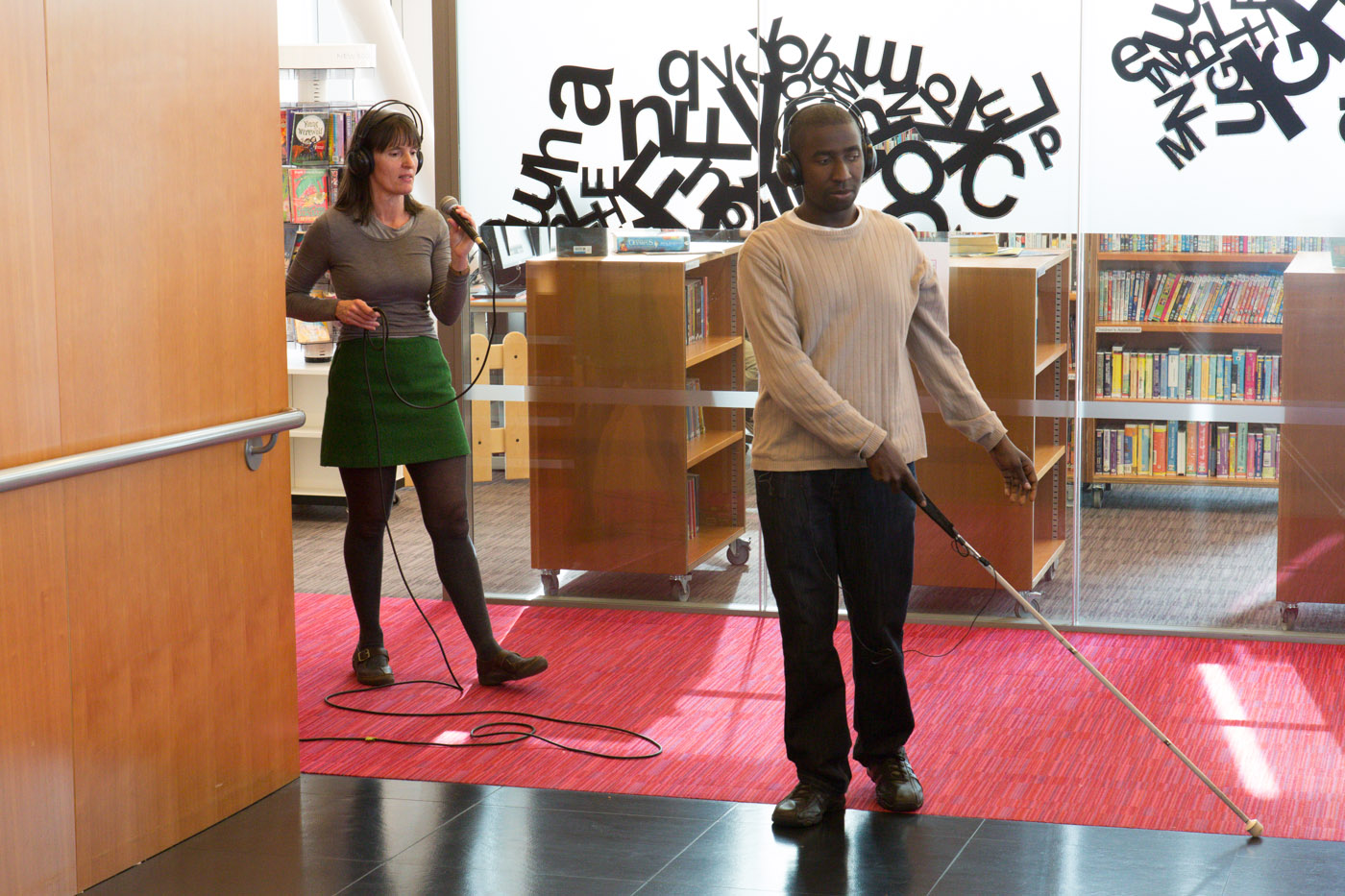
Lewis Jones performing in Sub Vision at the South Bank Centre: Photograph Geoff Young
When we were children, my father Lewis used to send us off on our favourite beach in Criccieth to find 2 identical stones. I believed it possible and ran about the place searching – because as a girl with 20/20 vision I thought I could ‘see’! Then having found what I was after, I’d place the stones in my father’s hands, satisfied as I watched and waited eagerly for the verdict. Time seemed to stand still as he explored, turned and held the stones in his hands. I felt both impatient and fascinated, as part of me surveyed the beach planning my next stone hunt, whilst noticing that his pace had slowed and the stone had become very very still….
Then I could see a smile break across his face as he spoke:
“I can feel a rough patch – there – on this one” and “notice, there is an indent on that one”.
Then I’d look again and question, because I was sure there had been no difference between the stones. Then he’d encourage me to hold one stone then the other with my eyes closed, and I’d search with my hands….sure enough, there was the indent, and yes, I could feel that rough patch clearly now. Feeling a little down hearted I’d then try to pin him down to choose the ‘best’ one. But my father seemed to find interest and beauty in each and every stone we found, and often in the stones that seemed the least remarkable. My eyes weren’t a match for my father’s hands. He ‘saw’ something that I couldn’t see;
like people – there are no identical stones in the world
like stones – people are ‘equal’ to one another
Every day for about 30 years, Lewis held one particular stone which turned from grey to shiny black in his hands. He says that it acts like a kind of mantra, enabling him to access his imagination; an ever increasing sense of inner space and connection with humanity.
My father believed in, and stayed with the moment; somehow entering a parallel time frame to my own. Perceptions were slowed down, enabling him to ‘sense‘ things that couldn’t be summed up and rejected like I had done in a momentary glance. Yet it seems as though such qualities are rare and undervalued in society today, and in the process of art making.
Isabel Jones 2010
“For many people, touch is a menial thing near the bottom of the hierarchy of senses. This attitude prevents us from creating things as deaf blind people”.
Lewis Jones 1992

Bonnington Gallery 1990: our company is born with 50/50 blind, visually impaired & sighted people



Eye Contact Dance Company 1989 – 2012: 50/50 Blind / visually Impaired people. Lewis, Rachel, Isabel, Keith, Geoff, James, Mike and Liam pictured here en route to perform Sub Vision at the South Bank Centre, London: Photograph Geoff Young


Lewis Jones performing in Sound Round Robin 1991 & with the company in 1995
After a 30 year old journey of navigation through uncharted territory – we have come to understand that in the name ‘salamanda tandem’ are symbols of ingenuity, survival, resistance, regeneration, equality, and momentum, found through drilling down to a few essential properties that support growth and change to happen.
These are some of the qualities are essential for all our survival!
This is Rachel Jones my mother, an essential part of Eye Contact in harmonious communication, picking up the vibration in singing with fellow deafblind people

